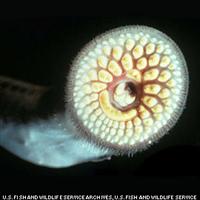Effect of introducing alien species into an ecosystem

Introduction
The alien species means an organism which is not indigenous to the place and they have been introduced either accidentally or intentionally transported to these new location human activities.
The great increase in the introduction of alien species that people are importing for economic, aesthetic, accidental, or even the complex reasons is leading to more species invading native ecosystems, which bring about results: they become invasive alien species (IAS) that have significant harmful effects on both ecosystems and economies.
The impacts on the ecosystems to this world continue to grow due to the increasing population and expanding levels of consumption, mean that more people are demanding more of nature's goods and services, hence pushing against the limits of sustainability. One serious aspect in this economic globalization is the movement of organisms from one part to another through trade, tourism or any other transport, many of these movements of organisms into new ecosystems where they become alien are generally beneficial or interested by the individual or specific group of the people, but the majority meet many and serious impact. And in a few cases, especially disease organisms and pests of forests or agricultural crops, the alien species is clearly harmful to all, or nearly so. Similarly, those who have been responsible for accidentally introducing species into new habitats may not have been willing to make the dealings necessary to prevent such accidents from occurring. They may not have understood the dangers, and in any case the dangers would be unlikely to have much economic impact on their own welfare, instead, the costs of such accidents are bear excessively by people other than those who are permitting the accidents to happen.
However the problem of introducing the alien species is on the man and it is caused by the following reasons. A/ People are largely responsible for moving the eggs, vegetative part, and the whole organism from one place to another, especially through modern global transport and the travel. B/ while some species are capable of invading well-protected ’intact’’ ecosystem, IAS more often seem to invade habitants altered by the humans, such as the agriculture fields human settlement, and the roadways. C/ Many alien species are intentionally introduced for economic reasons, a major human Endeavour .D/ The dimensions of the problem of invasive alien species are defined by people, and the response is also designed and implemented by people, with differential impacts on different groups of people.
The fauna and flora which are found in any particular location have been greatly influenced by past human activities, and people are likely to have an even greater impact in the future. This leads to the reflection of whether the current experience of globalization might lead to increased diversity in at least some places after the dust settles on the current extinction contraction. As one example, New Zealand has twice as many plants today as it did when humans first arrived, as well as a whole collection of new mammals; one tragic cost was the loss of an extensive unique fauna of birds. Further development of biotic communities as climates change will depend on organisms invading into origin habitats, sometimes hybridizing with the native species, sometimes replacing them, and sometimes adding to the diversity of the ecosystem with new species interactions. Through introducing species, humans are creating their own ecosystems, often more or less by accident, and disturbing ecosystems that had evolved over millions of years.
Humans apparently evolved in Africa, and then Homo sapiens spread to Europe and Asia over 100,000 years ago, Australia 40-60,000 years ago, the Americas about 15-20,000 years ago, and the far reaches of the Pacific less than 1000 years ago. Our species is a good example of a naturally invasive species, spreading quickly, modifying ecosystems through the use of fire, and driving other species too furthermore
For at least several thousand years, armies have been an important pathway for moving species from one region to another, with at least some of these becoming invasive (like the armies). The spread of new diseases by armies is well known. For example, measles were carried into the Americas from Europe by the early conquistadors and perhaps syphilis went in the opposite direction a virus that is a close relative of measles is native to the Steppes of Central Asia, but it frequently swept through Europe, being carried by cattle moved to feed armies during military campaigns. Africa remained free of this disease until 1887, when it appeared in Eritrea at the site of the Italian invasion, spreading through Ethiopia in 1888 and conquering the entire continent in less than a decade. In some parts of Africa, rinderpest was followed by wars and cattle raids as the tribal pastoralists sought to maintain their herds. Another result was that rinderpest led an ecological revolution against people and cattle and in favors of wildlife species that were resistant to the disease.
In general there are some mostly impact of introducing alien species this is that it destroy the nature of the ecosystem, it cause the spreading of disease organism such as small pox, syphilis, etc, also in other way it introduce the new species which can be more importance than the previous species to the eco system such as the introduction of a certain type of fishes (sangara) in the lake Tanganyika which become more famous than the previous specious.
For more information on visiting Tanzania contact Wild Things
For more information on visiting Tanzania's mountains contact Mountain Kingdom
About the Author: Frederick Mlaponi is a Tanzanian Student researcher on work experience with Wild Things Safaris in Tanzania http://www.wildthingsafaris.com . http://www.mksafaris.com .
 Back and Next - Back and Next
Back and Next - Back and Next See Also - See Also
See Also - See Also